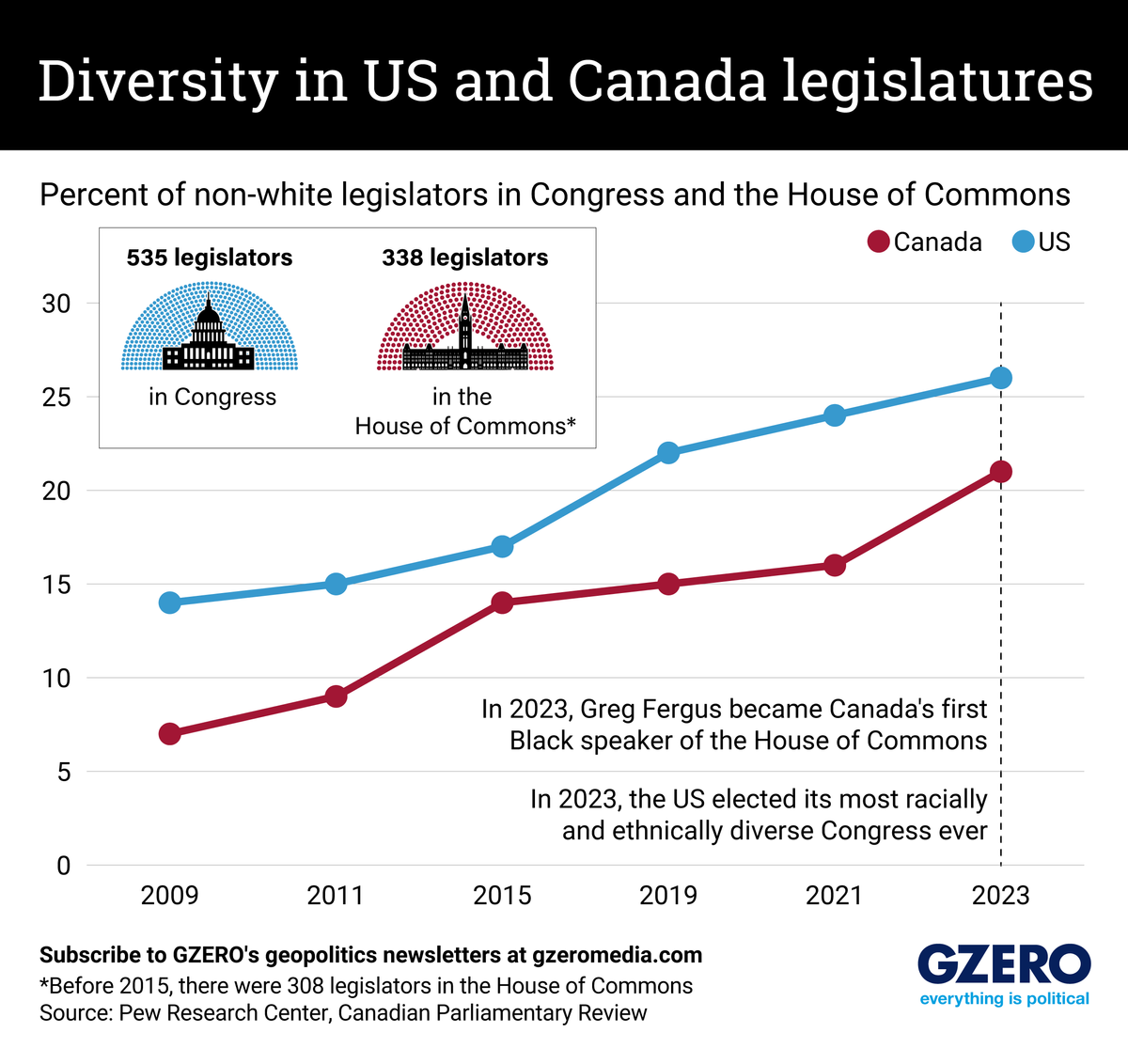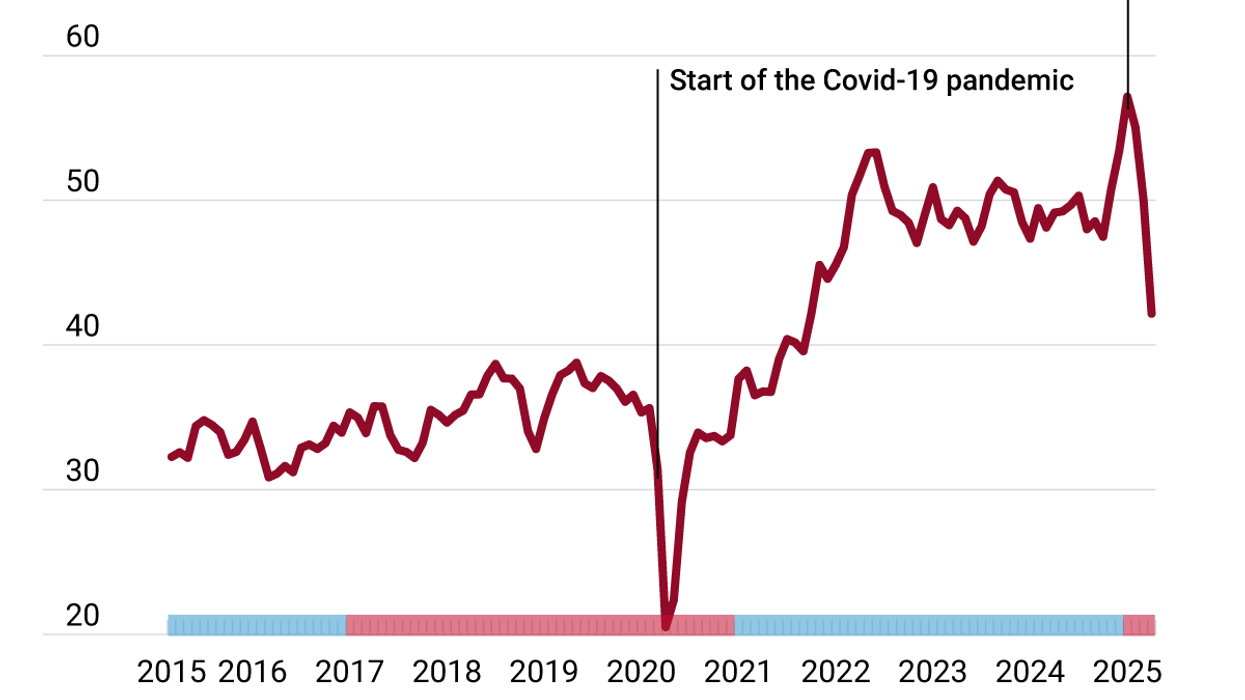Legislatures in both the US and Canada are increasingly more diverse.
The 118th Congress is the most racially and ethnically diverse in US history, with 133 lawmakers – about 25% – who identify as Black, Hispanic, Asian American, American Indian, Alaska Native, or multiracial.
In Canada, the House of Commons is also at its most diverse, and it elected its first Black speaker, Greg Fergus, in 2023.
Both chambers, however, still have a way to go to fully reflect the diversity of their respective populations. In the US, 75% of voting members in Congress are white, compared to their 59% share of the population. In Canada, where 20% of the population are immigrants, the number of immigrants elected to the House has slightly decreased since 2015, from 46 to 44 legislators.


















